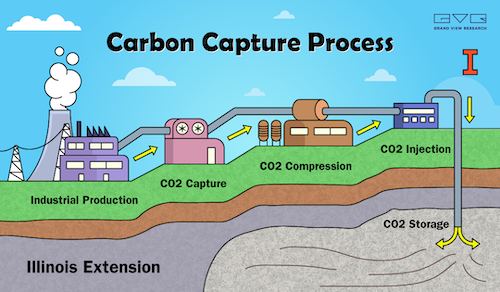Jim Beam column:Carbon capture gets major OK
Published 7:21 am Saturday, September 20, 2025
Since Southwest Louisiana is considered to be this nation’s unofficial LNG capital, it should come as no surprise that Cameron LNG at Hackberry has received approval for the state’s first authorized carbon capture and storage well.
The Advocate reported that the order from the state Department of Energy and Natural Resources (DENR) comes more than a year and a half after the U.S. Environmental Protection Agency (EPA) granted DENR its authority to permit wells for the new technology.
Carbon capture is the technology that injects high-pressure carbon dioxide in a near liquid state into formations deep underground in order to protect the environment. The newspaper said grassroots opposition has grown in some areas of conservative-leaning rural Louisiana where major storage operations are proposed.
The authority issued by DENR was based on well drilling, seismic testing, computer modeling and other data. The new Class VI permit near Hackberry would allow an arm of Sempra Infrastructure to build a well that could pump up to 2 million metric tons of carbon dioxide annually for 20 years under Black Lake southwest of Lake Charles.
The project would create more than 200 construction jobs and up to 10 operating jobs. It will include a proposed well site, compression facility and a 9-mile pipeline routed along existing rights of way to minimize impact.
This project is among 33 being proposed statewide. While it is the first approval in Louisiana, a handful of approvals have been permitted nationwide.
The storage operation by the Sempra arm, Hackberry Carbon Sequestration, would allow the company to cut the carbon intensity of its nearby liquefied natural gas facility, Cameron LNG, in a remote corner of Cameron Parish.
Hackberry Carbon officials said the permit is an important milestone, but cautioned that the project still needs additional engineering, commercial agreements and other approvals before the company can seek state authority to inject CO2 underground.
State officials said the authorization to inject is more of an in-house permit that comes after drilling verifies well conditions are as expected. The CO2 would be stored approximately 5,000 to 10,000 feet below the earth’s surface in layers separated by impermeable shale rock.
The storage layers between the shale contain highly concentrated brine that isn’t suitable for drinking. The nearest freshwater aquifer stops at 1,090 feet underground. The company’s consultant said the concentrated area would be a mile or more from the nearest underground faults or oil and gas or other wells.
State officials said they are making sure measures are in place to protect taxpayers long-term and avoid the kind of liability Louisiana currently has with orphaned oil and gas wells.
DENR officials detailed ways that they and Hackberry will be able to track movement of the CO2 plume through the years, primarily through the seismic and microgravity testing. The agency noted this and other continued testing should catch something that doesn’t match the modeling.
Many carbon capture opponents find it hard to forget the Bayou Corne sinkhole first discovered on Aug. 3, 2012, that caused the collapse of a salt dome cavern in Assumption Parish. And they continue to express concerns about the new process.
The community science director for Healthy Gulf said DENR “is undertaking a new era of destruction of our waters and our coastal wetlands before fixing the hundreds of idle and broken oil wells in Black Lake or ensuring the drinking water for Sulphur.”
Scott Eustis added that at least 149 inactive or older oil and gas wells are within 2.5 miles of Black Lake and 259 active drinking wells north of the injection zone. He said the Hackberry company should have to plug those inactive wells, but the company’s application says they are far from the projected plume.
Industry groups counter that the new technology has a large economic impact.
David Cresson, president and chief executive officer of the Louisiana Chemical Association and the Louisiana Chemical Industry Alliance, said, “This landmark decision (approval of the permit) not only cements Louisiana’s role as a front-runner in carbon capture in the U.S., but also directly addresses the surging global demand for low to zero-carbon products.”
Legislators have offered landowners some protections but not as many as they wanted. However, like it or not, carbon capture appears to have become an accepted process. Let’s hope all the safety features have been checked and double-checked.
Jim Beam, the retired editor of the American Press, has covered people and politics for more than six decades. Contact him at jim.beam.press@gmail.com.
